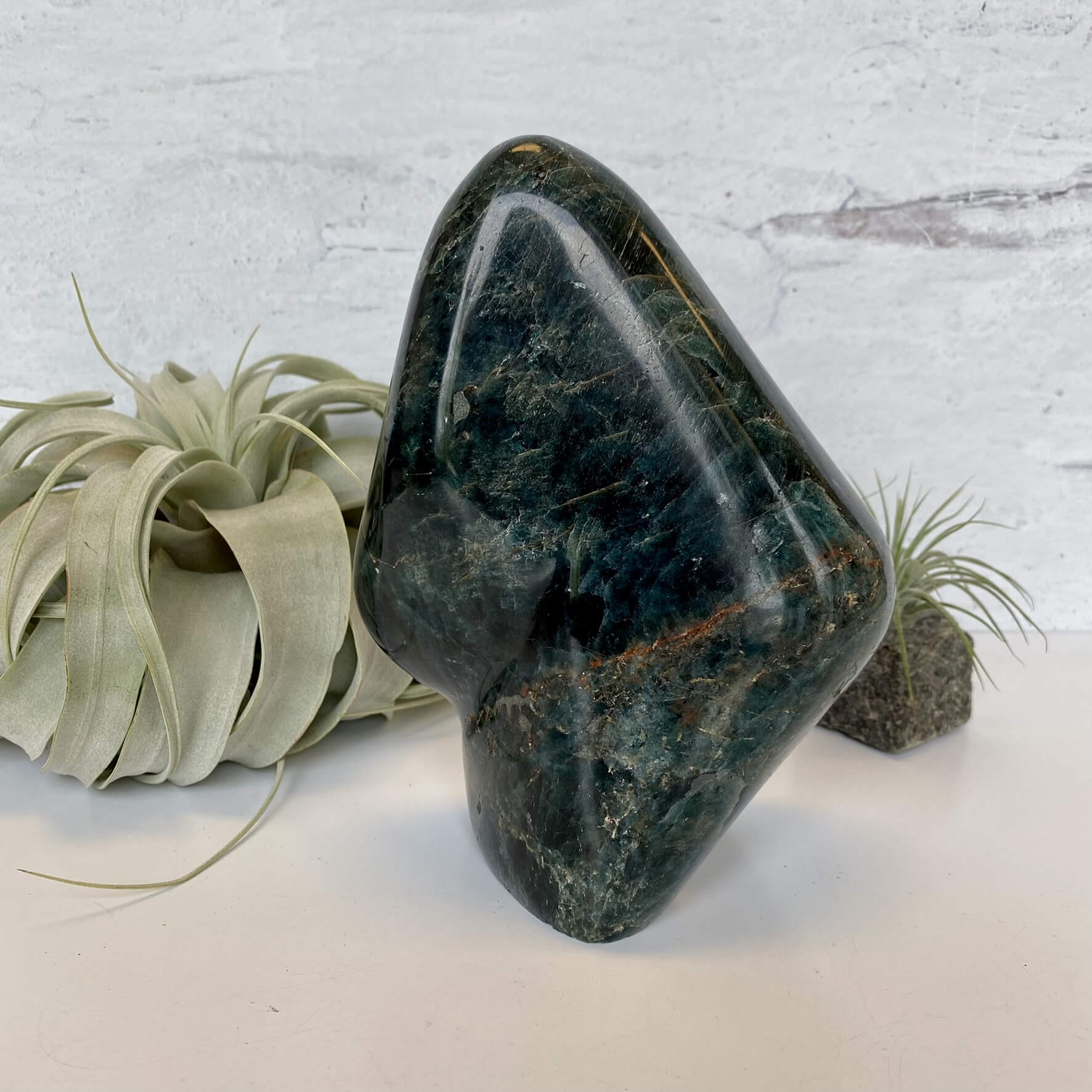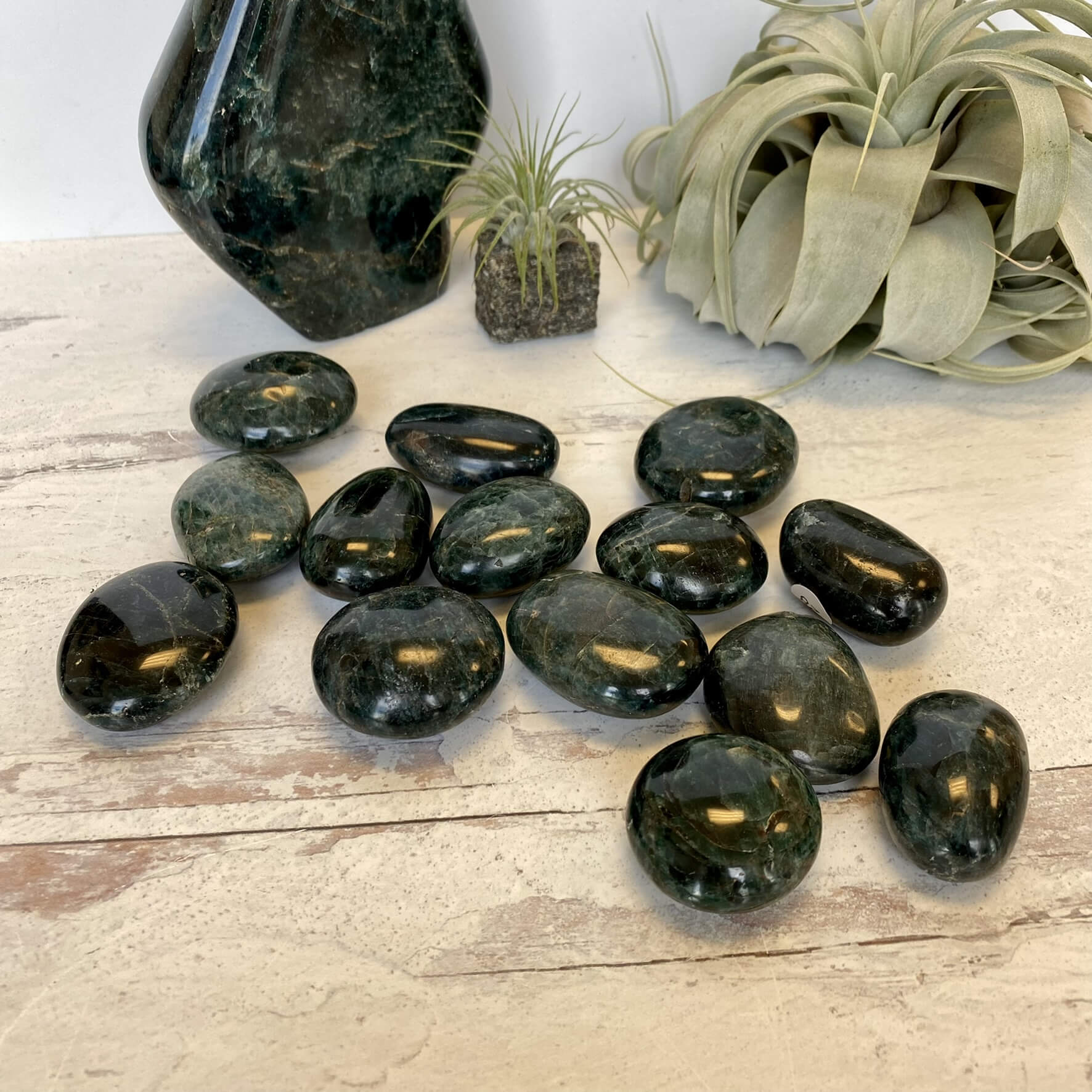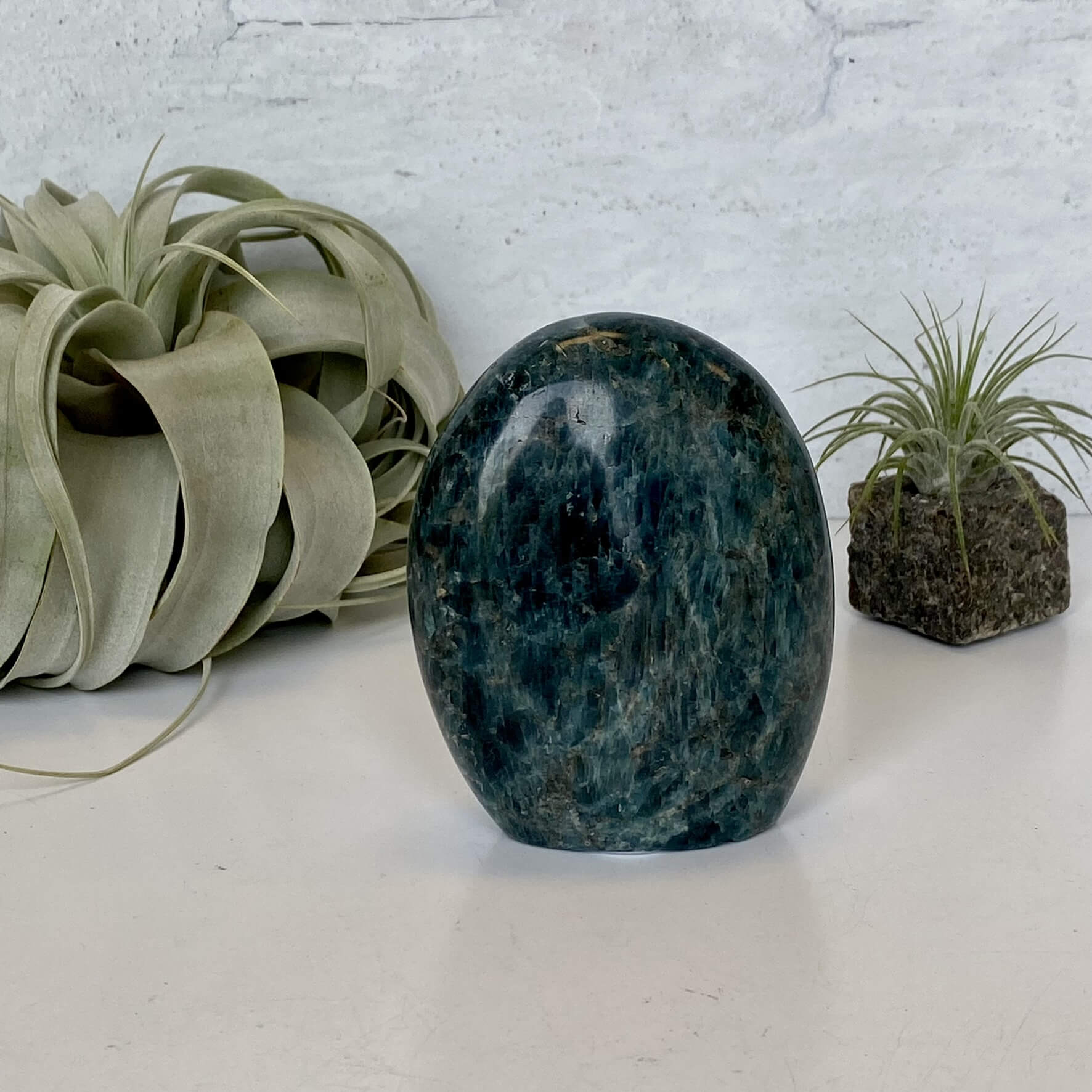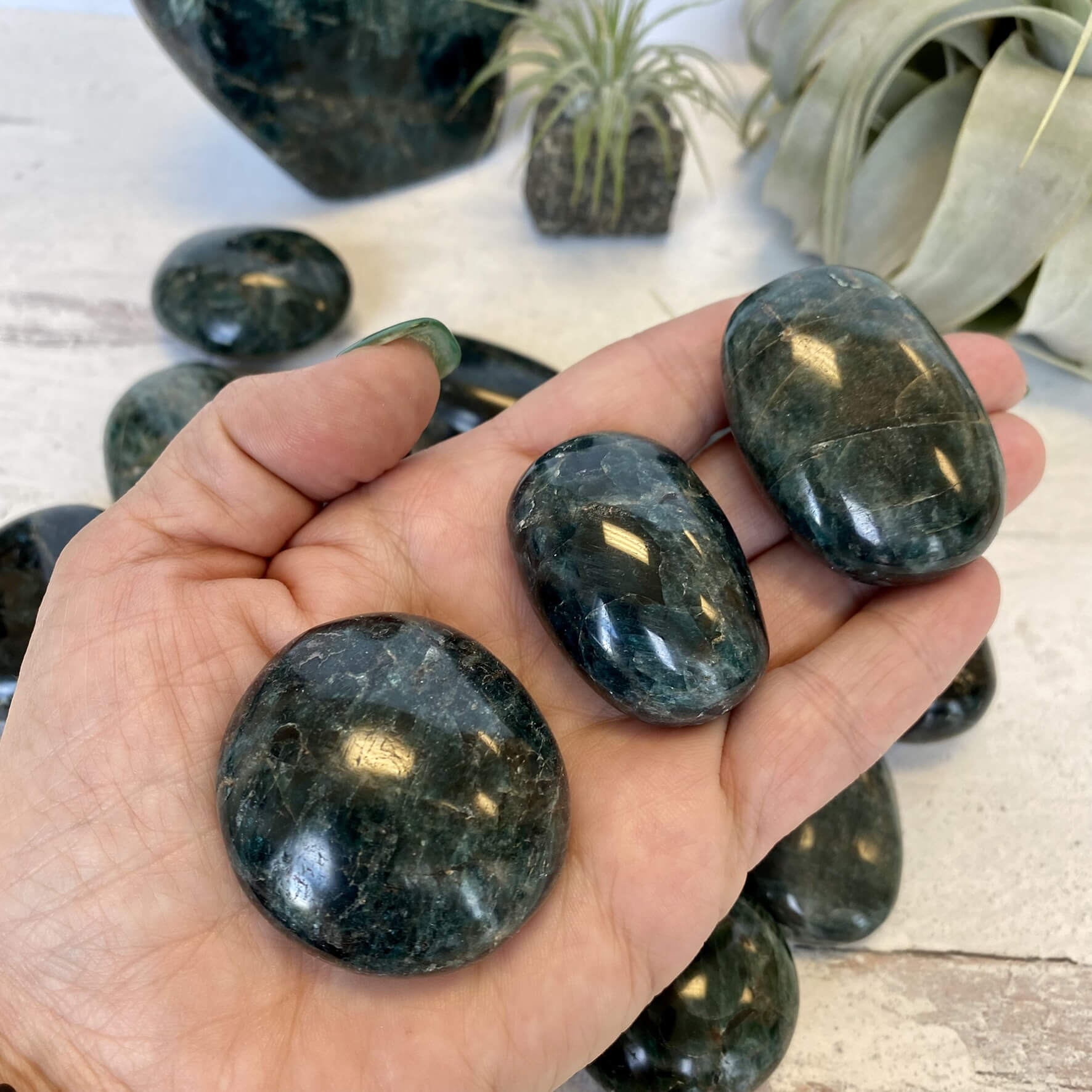
Green Apatite
Key Words:
Clears Confusion · Clears Apathy · Personal Growth · Collective Good · Creativity · Hunger Suppression
Clears Confusion · Clears Apathy · Personal Growth · Collective Good · Creativity · Hunger Suppression
Apatite refers to a group of phosphate minerals that share similar chemical compositions and physical properties. It is an important component of phosphorite, a sedimentary rock mined for its phosphorus content. Phosphorus is a critical element in the production of fertilizers, making apatite essential to modern agriculture and food production.

Most of the world’s phosphate rock is processed into phosphate fertilizer, used to grow crops on a global scale. It is also used in the production of phosphoric acid, elemental phosphorus, and various industrial chemicals. Without apatite-based phosphate fertilizers, it would be nearly impossible to meet global food demands.
Over 75% of the world’s known phosphate reserves are located in Morocco and Western Sahara. Other major producers include China, the United States, Russia, and Brazil. While this mineral is widely used in agriculture and industry, its striking color and interesting formations have also made it a popular stone in jewelry and personal stone collections.

The name "apatite" comes from the Greek word apate, meaning “to deceive,” because it was often mistaken for other minerals such as peridot, tourmaline, and beryl. Its color can range from vibrant greens and blues to violet, yellow, or brown depending on trace elements within the crystal.
From a personal wellness perspective, apatite is often appreciated for its refreshing energy and its association with renewed motivation, creativity, and focus. Many people enjoy keeping a piece of green or blue apatite on a desk or near study spaces to help with mental clarity and to cut through distraction or emotional stagnation.
Green apatite, in particular, is noted for its support in bridging intention with action. It’s sometimes used by those working toward personal or community goals that require steady follow-through and a service-minded approach.

Some people also associate green apatite with appetite control, and it has been casually nicknamed the "hunger suppression stone," although this claim is anecdotal and not backed by scientific studies.

Because of its relatively soft structure (Mohs hardness of 5), apatite should be stored with care to avoid scratches or chips, especially when carried or worn daily.



